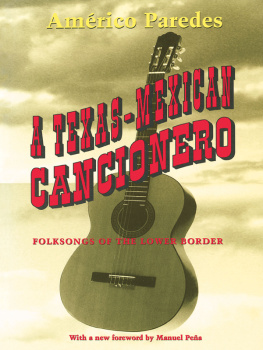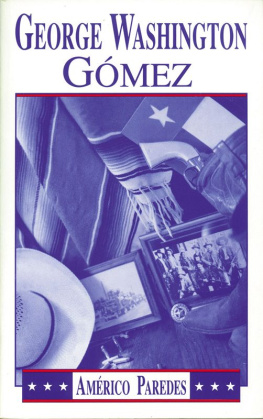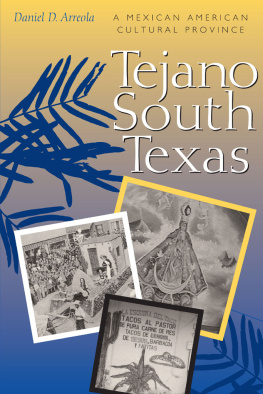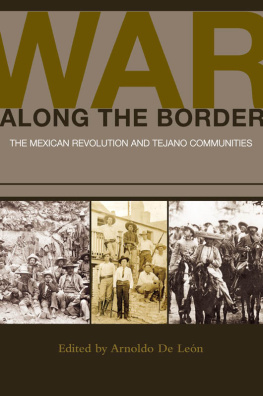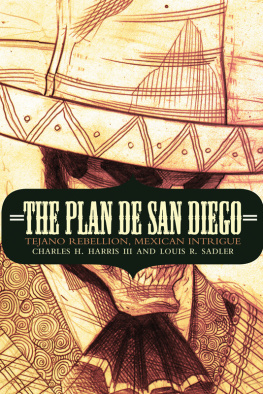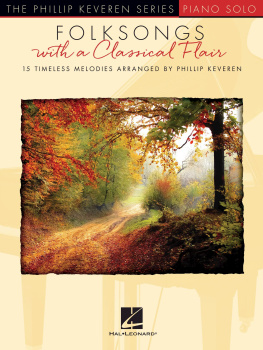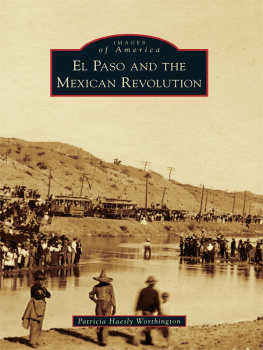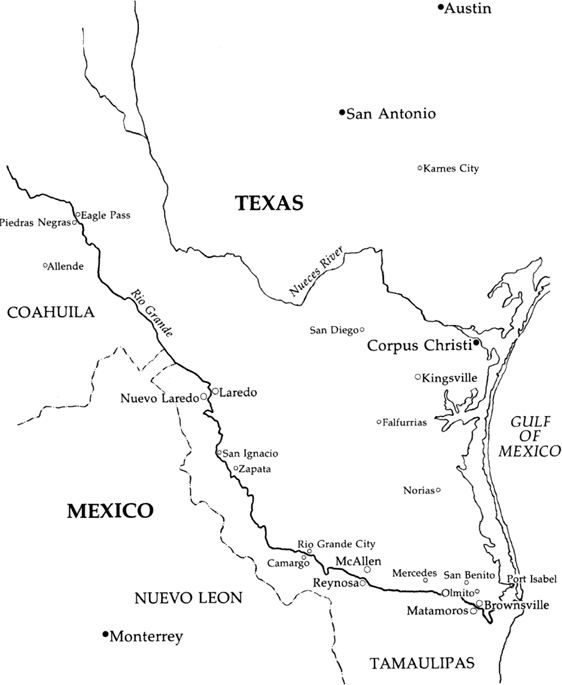AMRICO PAREDES
Photograph on preceding page by Ralph Barrera
A Texas-Mexican Cancionero
FOLKSONGS OF THE LOWER BORDER
Amrico Paredes
Foreword by
Manuel Pea
UNIVERSITY OF TEXAS PRESS
Austin
1976 by the Board of Trustees of the University of Illinois.
Reprinted by arrangement with the University of Illinois Press.
Foreword, copyright 1995 by the University of Texas Press
All rights reserved
Printed in the United States of America
First University of Texas Press edition, 1995
utpress.utexas.edu/index.php/rp-form
Library of Congress Cataloging-in-Publication Data
Library ebook ISBN: 978-0-292-76270-1
Individual ebook ISBN: 978-0-292-78796-4
DOI: 10.7560/765580
A Texas-Mexican cancionero : folksongs of the lower border / [compiled by] Amrico Paredes; foreword by Manuel Pea.
p. cm.
Spanish words with English translations.
Reprint. Originally published: Urbana, Ill. : University of Illinois Press, 1976, in series: Music in American life.
Includes analytical commentary.
Includes bibliographical references (p. ) and index.
ISBN 0-292-76558-4
1. Mexican AmericansTexasMusic. 2. Folk musicTexas. 3. Folk musicMexico. 4. Folk songs, SpanishTexas. 5. Folk songs, SpanishMexico. 6. Folk musicTexasAnalysis, appreciation. 7. Folk musicMexicoAnalysis, appreciation.
I. Paredes, Amrico.
M1668.4.T49 1995
94-33615
To the memory of my mother,
who could sing a song or two;
and to all the other singers
of the Border,
who left part of themselves
in my keeping.
CONTENTS
by Manuel Pea
The country of the songs. This map locates the major historical events mentioned in the songs of the Lower Rio Grande Border. Based on a map by Ed Miller
A lthough cancionero means songbook, it may also refer to a corpus of folksong. A Texas-Mexican Cancionero pretends to be both: a songbook and a representative collection of the folksong corpus of a Texas-Mexican area (the Lower Rio Grande Border) at a particular period in history (1750-1960). While not all-inclusive, it does attempt to give examples of the main forms and the principal themes in Texas-Mexican folksong.
There is only one musical form not represented, the old style of tune used in singing the dcima. Most dcima tunes are based on singing styles antedating modern music and present serious difficulties for the average person both in the transcription and in the reading of the music. This book is intended for the average reader rather than for the professional musician; and, as transcriber of tunes, I consider myself somewhat below average. Readers interested in the musical form of the Texas-Mexican dcima are referred to The Dcima Cantada on the Texas-Mexican Border: Four Examples, with musical transcriptions and analysis by George Foss. The dcima as a poetic form may be found in El hurfano (no. 46), which is sung to a corrido tune.
The sixty-six songs in this volume were chosen from a Texas-Mexican repertory several times as large. The criterion used in selecting the songs for inclusion was that they be associated with the area or representative of it in some way. Compositions that became current during the 1960s and 1970s are not included. Also excluded are songs that have been universal throughout the Greater Mexican area and that have no particular ties with Lower Border history or attitudes. At least half of the songs included are corridos, but the reader will find other folksongs as well. Contrary to popular belief, not all Mexican folksongs are corridos. There are several examples of the danza, by the way, which has been practically ignored by folklorists as one of the forms of Mexican folksong.
The musicologist and the analyst of folk literature may find little to interest them in the pages to follow. These are songs I have known and sung during the past fifty years or so. I have set down here my own variants of them, my variants as sung at one particular time and placeAustin, Texas, in the early 1970s. I will not imitate some published folksongers and claim folkloric status, for my repertory because I once was a member of the folk. I do say, however, that the variants are simple and honest, as I have sung them and heard them sung many times among other Texas-Mexicans. But they are not the minutely faithful transcriptions of specific performances required for scholarly analysis and should not be taken as such.
My main interest has been in the meaning the songs have had for the people who have sung them. From the viewpoint of cultural history, then, the songs and the background materials accompanying them may be of some value. The book speaks to the descendants of the people who made the history in which the songs are embedded. It is their cancionero. But it may also serve as an introduction to anyone who is seriously interested in pursuing the study of the folksongs of Greater Mexico. It is with this thought that the Notes to the Songs and the Bibliography are offered. In the Notes to the Songs, I have limited myself to placing each song within the context of Greater Mexican folksong, so only Mexican and Mexican-American references are given. They can serve, along with the Bibliography, as a point of departure for further study. Also given are references to field-recorded performances in the Library of Congress (AAFS) and the University of Texas Folklore Archives at Austin. Very few of these songs have been studied in depthGregorio Cortez, Jos Mosqueda, and Benjamn Argumedo are among those few. Almost any one of the others is worthy of a paper, a monograph, or a book.
English versions of the song texts are included for the benefit of those readers who may have some difficulty with the original Spanish. These are literal prose translations and not attempts at poetry. Words that are not easily translatable without a great deal of explanation have been left in Spanish and are italicized. Most of such terms are discussed in the Glossary. English words found in the original Spanish are underlined. Besides the Spanish words taken from the translations, the Glossary also contains some definitions of rural and Border dialect terminology from the Spanish texts, terms that could give trouble to the reader of Spanish and that may not be found in most bilingual dictionaries. Terms discussed in the background comments on the songs are not included in the Glossary.

